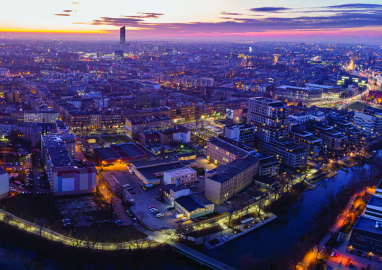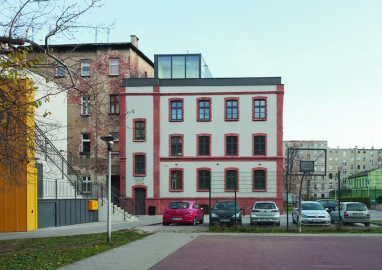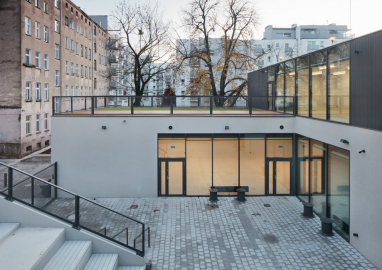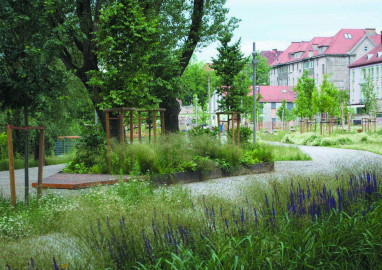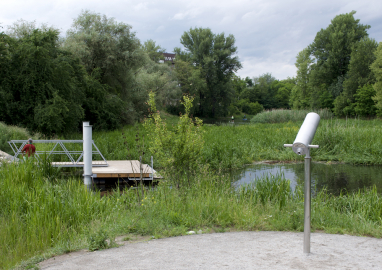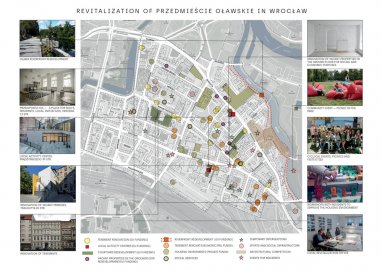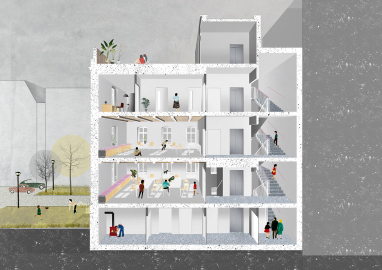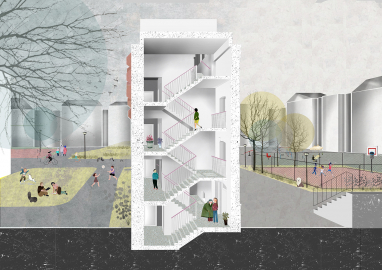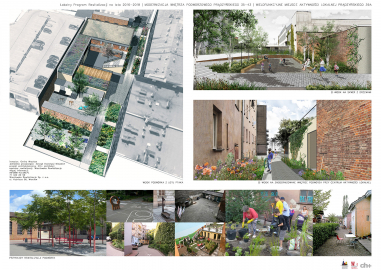Revitalization of Przedmieście Oławskie
The core of the project was to create a viable programme and deliver a revitalization process in a comprehensive and flexible way, considering the diversity of needs and participants.
Strategic planning and implementation of targeted projects kickstarted wider regenerative processes and led to improve the quality of life in the entire neighbourhood.
Przedmieście Oławskie is an urban district near the city center. It typifies dense 19th-century neighbourhoods, with representative public spaces and ornately decorated tenement houses with spacious courtyards.
The degradation and deprivation of this area prompted the decision to launch a revitalization process, which was started in 2012 by the development of a strategic masterplan document. The masterplan assessed the issues of the area in an interdisciplinary way and was ‘a roadmap‘ for revitalization activities, a base for further planning documents.
Local Activity Centres (LAC), were meant as inside-block interventions upgrading a run-down space and enhancing neighbourhood bonds. The objective of the Oława riverfront revitalization was to regain the dilapidated green areas and transform them into recreational green public spaces with a versatile programme.
The main problems were social and economic deprivation (poor quality of life, high population density, high crime rates, low levels of economic activity, poor performance in civic participation) and a chronic lack of maintenance and investment in the built environment and infrastructure for decades, devastating damage sustained in the Great Flood of 1997.
As a result, the residents lost trust in the local authority and became disillusioned about the environment and their prospects.
It was necessary to program a long-term, continuous and multifaceted process, involving all people who cared about the area, apply effective actions and carefully select priorities - main areas of intervention. Implementing specific actions there was supposed to bring positive effects to as many inhabitants as possible and to trigger off further actions.
LACs were meant as a gentle transformation of historical outbuildings into inviting and flexible community facilities with a versatile programme. The promenade consists of the pedestrian and the bicycle path.
It is a transition zone between the 19th-century inner-city neighbourhood and the wild and natural river ecosystem.
In the revitalization area, many diverse investments were carried out, leading to various procedures. Listed buildings were restored in accordance with conservation guidelines. However, wherever possible, the designers attempted to create modern solutions, both in terms of urban fabric and of architectural expression, construction and materials. The revitalization aimed to follow sustainable city development and environmental protection principles. The investments and the activities for residents initiated and carried out by the revitalization operator (Wrocławska Rewitalizacja) were financed by EU and municipal funds.
The LACs main environmental premise was to reuse historical structures and extend them with modest contemporary parts fitted with green roofs or bird-nesting boxes.
Waterfront constructions are made of natural, local and water-related materials including raw wood, old wood, logs, ropes, Corten steel, raw concrete and permeable walkways. All rainwater from hard surfaces is used on site. About 120 plant species used in compositions, mostly native, are chosen for biodiversity and wildlife support and to look as wild as possible.

